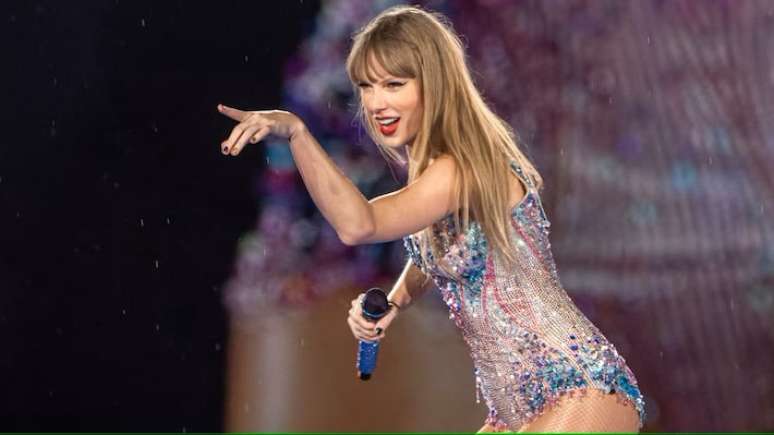To Rolling Stone Brazil, artist talked about Gira Mundo, an album sung in Yoruba with rereading of songs dedicated to the Orixás
In GIRA Mundo, Majur Deep dive into the recognition of African culture in Brazil. It is a rescue of the past that also looks to the future. In each track, the Bahian artist resorts to Afropop highlighted by the use of orchestral instruments to offer a new perspective of the songs representing the orishas. More than a resumption, however, the album released in May is an invitation to inspire and transform understanding of Afro-Brazilian culture.
THE Rolling Stone Brazil, Majur explains the inspirations and the creative process of GIRA Mundoreveals the connections that the album announces and details where it wants to go with this work.
An album that took shape alone
GIRA Mundo It consists of 16 tracks, each dedicated to an orisha. The disc starts with “Bará”inspired by the messenger between the material world and the spiritual. Passes through “Ogum”, “Oxum”, “Iemanjá”among others, and ends with “Oxalá”the father of all the orishas and creator of the world. Reinterpretation brought new guise to traditional songs and required a particular look at each song.
“Within Ilê Axé we learn about the characteristics of each orisha, then which element of nature it represents, the signs and associated sounds. This knowledge was the main thing I sought to bring the elements and represent each orixá in each song. I couldn’t put a slow song to Ogum or Odé. I did everything from feeling and how it has to be,” he explains, ”he explains Majur.
The production accompanied this movement. Made in isolation, the songs were gathered only in the last stage of the work. In the end, the album took shape alone. Instead of the singer, who suggested the sequence of the tracks was her saint’s father.
He sent me the setlist. And, in fact, the order is the xirê [celebração de roda que reverencia os Orixás] that happens in all axes of Brazil and the world. It was not a sequence that I created. When we organized the songs in the Order of Xirê, the album became alone. The biggest need was to feel and represent that feeling. ”
Majur He describes this process as something magical and says he is shocked not only with the way he happened, but also with the result. “Imagine, I spent all the time building every song and in the end I just found out how they would be willing inside the album. It was really the destination. And if it was bad? It didn’t, it’s perfect.”
Created from the prism of feeling, the album reveals some surprises that carry listeners to the artist’s universe. With the exception of some brief passages, all songs are sung in Yoruba, a language originating from West Africa. The language was already part of the life of Majurwho was used to singing these songs inside the Ilê. She acknowledges that much of the public will not understand exactly what is said in each song, but that is precisely that desire. Then the artist intends to launch a vinyl with translations and explanations.
Recorded in Bahia under the musical direction of Icarus Sá and ICARO SANTIAGO, GIRA Mundo It is the outcome of a trilogy for Majur. In the first work, Ojunifé (2021), she opens with music “Agô” And he says in Yoruba: “Lati Kori Agbara dos Orixás”, which means, “I sing the power of the orishas.” Already in the second, Risks (2023), it brings a message of faith.
“First I needed to find myself, and the way I found it was to reconnect with my roots. This is not a guidance for everyone to get into candomblé, but that’s how I managed to connect with myself. So this first album brought candomblé, but it wasn’t an album about it. I was talking about how I felt in that new body. Risks Shows me living what I went to. AND GIRA Mundo I see how a thank you today can be a complete woman of myself. ”
See this photo on InstagramA publication shared by Rolling Stone Brasil (@rollingstonebrasil)
Mission beyond aesthetics
Musically, the third album rests on Afropop. But Majur sought to go beyond the boundaries of gender and rhythms. GIRA Mundo It is electronic and futuristic while refining orchestral instruments such as piano, acoustic bass, clarins and atabaques.
The mixture is not purely aesthetic and reveals the artist’s mission. “It’s an insertion of Afro-Brazilian culture within mainstream. I wanted to bring this culture as popular as possible. Take the instruments that people are used to using and transforming it.” Diving has a clear goal: to reconnect candomblé in the country and encourage a new look at Afro-Brazilian religions.
I want to demystify the demonization of Afro-Brazilian cultures. This is surreal because we are in a secular country, but here religions ultra the limit and invade the other’s spaces. So I hope this album can open people’s hearts to understand what we do inside a yard. Prejudice erodes the information. What was an ancestral, beautiful thing turns into another vision. And it’s a lack of respect. If you don’t know what candomblé is, here is an opportunity for you to know. ”
See this photo on InstagramA publication shared by Rolling Stone Brasil (@rollingstonebrasil)
This message Majur takes it to the planet. After the launch of GIRA Mundothe artist runs Europe with a tour that has passed through cities such as London, Barcelona and Paris.
+++ Read more: Vanessa da Mata resumes chronic Brazilian in new album: ‘I’m a storyteller’
+++ Read more: Hodari continues intimate trip on new album: ‘I in a very pure way’
Source: Rollingstone
Earl Johnson is a music writer at Gossipify, known for his in-depth analysis and unique perspective on the industry. A graduate of USC with a degree in Music, he brings years of experience and passion to his writing. He covers the latest releases and trends, always on the lookout for the next big thing in music.








